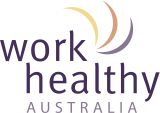
Aerial view of workers participating in a workplace safety culture initiative, promoting open communication and proactive hazard reporting
Creating a safety culture is essential for fostering a positive, resilient work environment where both physical and mental well-being are prioritised by the majority of an organisation. But how do you do that?
Leaders of all levels of an organisation, from senior executives to supervisors, play a crucial role in creating a safe and positive work environment. In this article, we offer five strategies to help you “walk the talk” and build a genuine safety culture.
Workplace Health and Safety Queensland defines safety culture as “an organisational culture that places a high level of importance on safety beliefs, values and attitudes – and these are shared by the majority of people within the company or workplace”.
Organisations that want to have a true impact on their culture understand that it starts with leadership.
For a safety culture to be successful, it needs to be led from the top – that is, safety culture needs to be embraced and practised by the CEO and senior managers.
Below are five practical ways leaders can bring safety and positive work culture to their organisations.
1. Place your people first
Psychological Safety is the “belief that one will not be punished or humiliated for speaking up with ideas, questions, concerns, or mistakes and that the team is safe for interpersonal risk-taking” (Amy Edmonson, The Fearless Organization).
When workers feel safe to take these risks, they’re more likely to contribute actively to safety discussions. Leaders at all levels can support this by:
- Building genuine connections with workers and understanding their roles and challenges, fostering trust and open dialogue.
- Encouraging regular engagement between leaders and workers to promote a holistic approach to safety.
- Promoting team connections that celebrate differences, respect, and constructive dialogue.
Leaders who consult with workers, demonstrate empathy and vulnerability, and support positive team climates enhance psychological safety. Research has demonstrated that these psychological safety practices improve team performance, creativity, problem-solving and safety outcomes.
Better relationships increase the likelihood that people will behave in a way that will achieve the safety goals articulated in the company values.

2. Walk the talk
A role model sets an example of behaviour. They understand that their words and actions are often mirrored by others.
Leaders of all levels should model the behaviours and attitudes they want to see in the workplace. This is not just the responsibility of HR or Safety teams. Encourage leaders, managers and supervisors to be visible role models who set the tone for a culture of open communication, respect, and well-being. Here are some suggestions:
- Share personal stories and demonstrate your vulnerability to build trust and break down stigmas, especially around acknowledging pain and mental ill health.
- Move beyond token gestures – having an EAP or onsite injury management system is not enough if workers don’t feel comfortable or informed about using these services. Encourage managers to use these services and share their experiences with workers.
- Acknowledge your errors and practice self-reflection, sharing any lessons learned with your workers and managers.
- Demonstrate your commitment to and appreciation of diversity in the workplace.
3. Encourage personal and professional growth
Managers play an essential role in supporting staff resilience and well-being. Studies show that mental health training for managers generally improves workers’ mental health in the short term, especially when widely adopted across the organisation. You can cultivate an environment of personal and professional growth by making training accessible to all.
- Invest in leadership development, ensuring leaders are competent in people management skills like communication, empathy, and teamwork. There is a variety of courses to pick from, ranging from online to face-to-face, mentoring programs, and leadership immersions specific to certain groups (women, indigenous, multicultural, etc).
- Encourage and reward professional development, particularly for managers and supervisors who may find it challenging to take time away from operational duties to focus on skill-building.
- Don’t forget your workers. Improve their health literacy by providing targeted safety and health training relevant to their daily tasks. Invest in their development and provide opportunities for them to learn new skills and progress in their roles/careers.
- Offer coaching/mentoring programs across different roles and seniority levels. Everyone benefits from coaching, not only leaders or new starters.
4. Communicate and consult
Regular, positive and clear communication is crucial for reinforcing a safety culture.
- Establish systems for consulting with workers and involving them in decisions that affect their work. Regular toolbox talks and an anonymous suggestion system can be effective ways to gather feedback.
- Encourage workers to speak up about safety issues without fear of repercussions, creating an environment where safety concerns are addressed proactively. Be aware of how culture, role and age can deter workers from speaking up for fear of losing their jobs or being seen as “troublemakers”.
- Help your workers understand how their work contributes to the organisation and “the big picture”. Are they the key to the food chain, processing foods that will feed other Australians? Will their metalwork help deliver safer machines to workplaces?
- Keep it simple and use stories to communicate. “Meet a team member” videos and interviews are a great way for workers to learn about a team member.
When employees feel comfortable asking for help, sharing suggestions informally, or challenging the status quo without fear of negative social consequences, organizations are more likely to innovate quickly, unlock the benefits of diversity, and adapt well to change.
5. Revise and update
Building a safety culture is an ongoing commitment.
- Review and revise your policies to ensure they address current risks and align with OHS legislation.
- Involve employees in the revision process by seeking their input and feedback. It will help boost ownership and adherence.
- Ensure policies are accessible and easily understood by everyone in the organisation. They should be written in clear and concise language.
Conclusion
For a safety culture to thrive, it must be integrated into every element of a business, championed by leaders, and practised at all levels.
Leaders who prioritise psychological safety and demonstrate a real commitment to the well-being and growth of their workers can build a resilient, adaptive workplace that promotes safety and is a great place to work.
Better relationships increase the likelihood that people will behave in a way that will achieve the safety goals articulated in the company values.
Sign up to our monthly enewsletter
"*" indicates required fields

